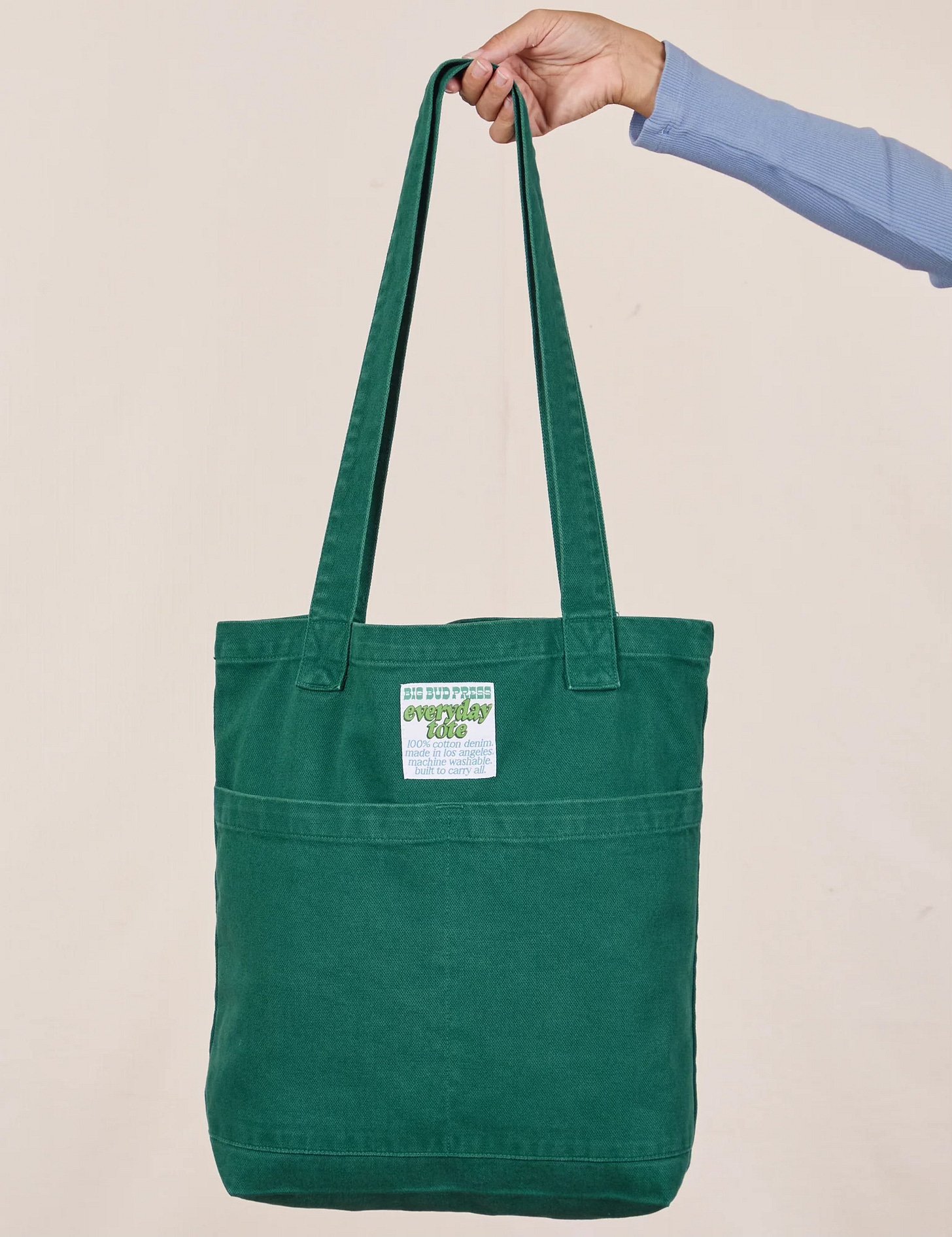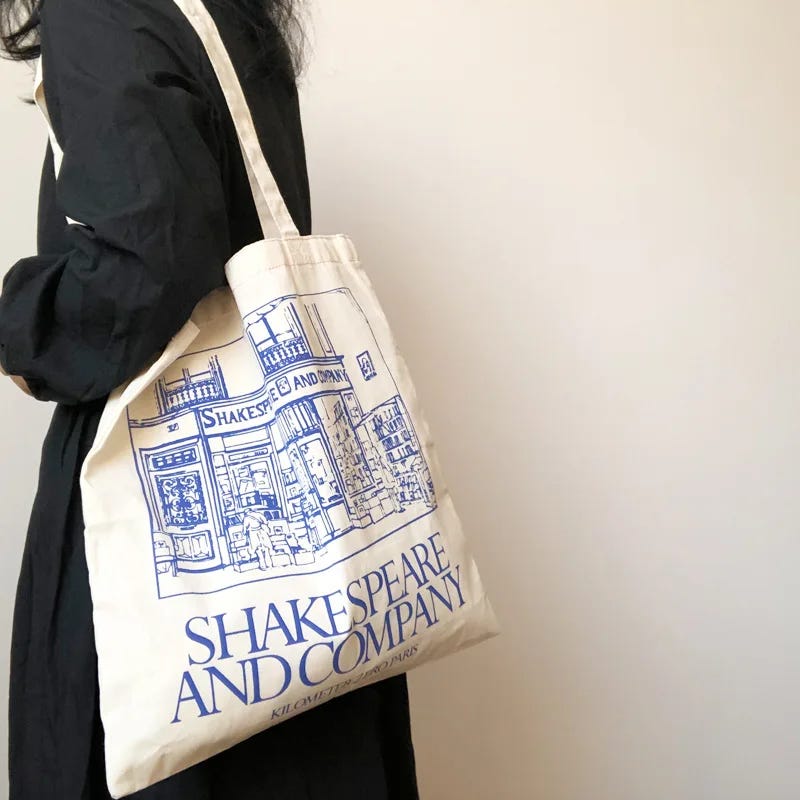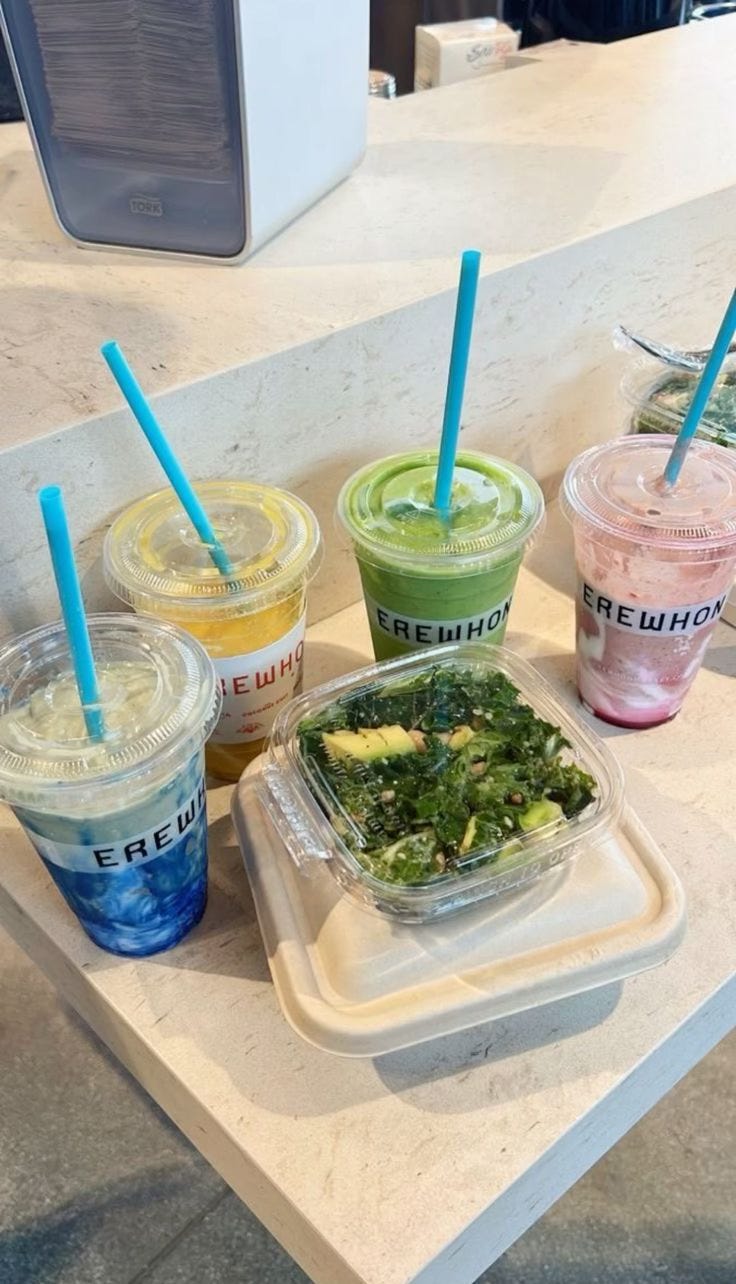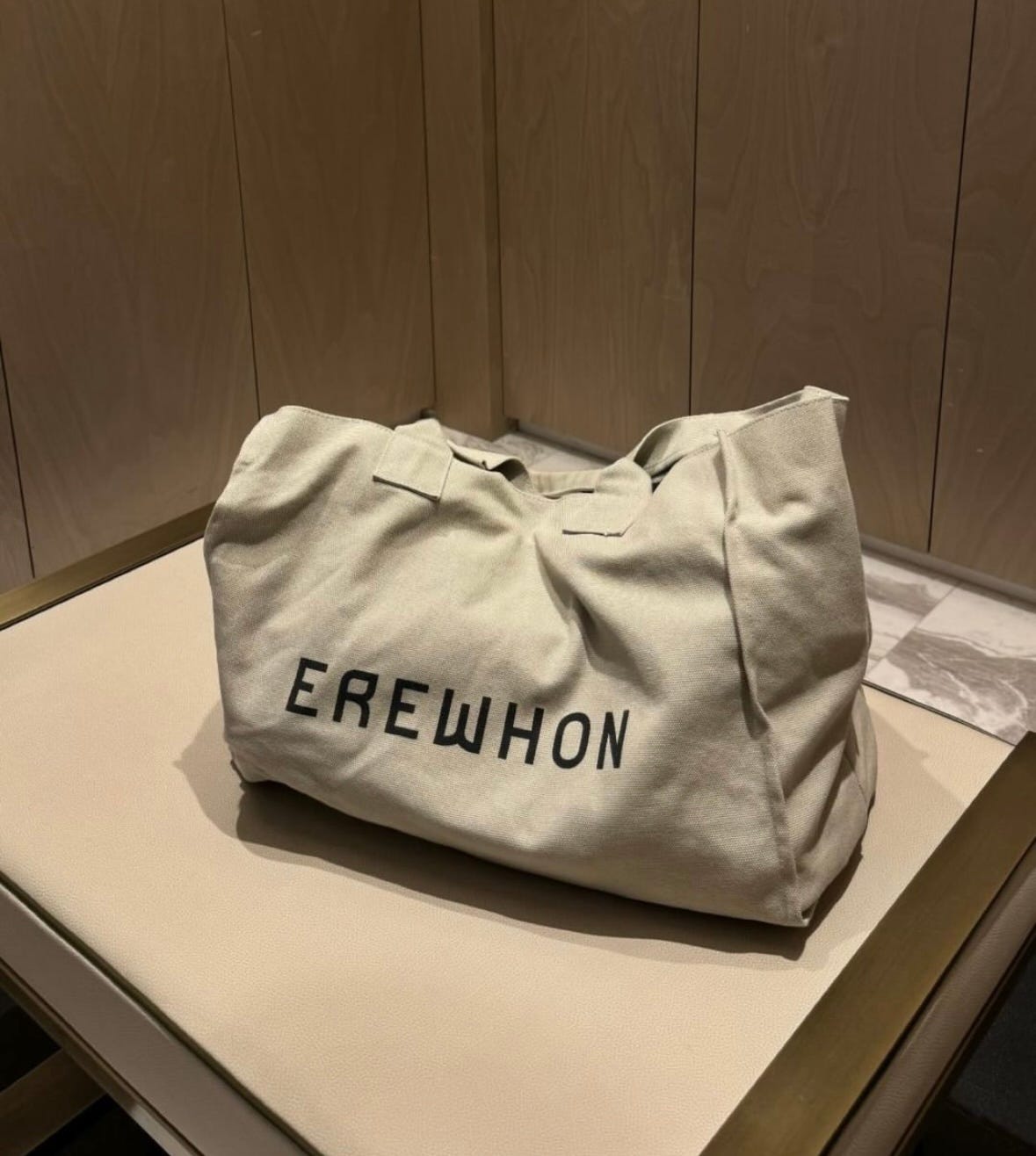I own 53 tote bags. I wish I were exaggerating.
Each one tells a story, not just about where it came from, but about the cultural moment. Tote bags have quietly transformed from carriers of groceries and books into potent symbols of identity and social signaling. Some of my totes were purchased, but most were gifted – either for shopping at a store or as part of a PR package. My favorites are my Outdoor Voices (tried and true), Big Bud Press (I bought this one but she’s dur-a-ble), and one I have from running a race called the Brooklyn Mile (this one has a zipper!).

When did every brand decide tote bags were the move for them? Probably when “sustainability” became the oh-so-sexy buzzword that it did in 2018/2019 – back when plastic, in all its forms, was the scapegoat for all environmental wrongdoings, and people were shamed for using plastic straws, plastic to-go cups, and plastic bags.
By now, we all know that tote bags aren’t inherently more sustainable. In fact, they need to be used 20,000 times to offset the additional energy required in their production. But, they’re fun. They’re a means of self-expression. And they’re a part of brand-fan culture today.
This irony isn't lost on consumers, yet the allure of the tote bag persists.
It speaks to the complex nature of modern consumerism, where the lines between sustainability, fashion, and identity are constantly blurred. The challenge lies in finding a balance between these elements, promoting genuine sustainability while allowing for personal expression and brand affiliation.
Every city seems to have its own hyper-specific version of that culture. For example, in LA, Big Bud Press is ubiquitous; but in New York, despite them having a store here, the bright canvas totes are few and far between. When I studied in Europe during the Fall of 2022, I saw firsthand how each city had its own trending tote bag – Helsinki had Marimekko, Paris had Shakespeare and Company. For a while in New York, it was The Strand, then the New Yorker, and even Harry Styles' Love On Tour.

In a way, your tote bag collection serves as a tapestry of who you are, a collection of the trips you’ve taken, the lunch spots you’ve frequented. But what about an inauthentic tote? That’s right. Dupes are hitting the scene. people start buying up bags for places they may never even have been – which leads me to the Erewhon Market tote bag dupe that’s been populating NYC streets.
As a grocery store, Erewhon thrives off of its exclusivity. Its stores are only located in LA, and are notorious for their strikingly steep prices, high-end produce, better-for-you snacks, and not to mention the celebrity sightings. Smoothies can go for upwards of $20 a pop. Erewhon is much more than a grocery store – it’s a signaler of status and affluence – but tourists and locals alike still flock to it for the hot bar and custom-printed mason jars.
When the Erewhon tote bag started popping up around Lower Manhattan over the last few months, I perked up. I was confused – this completely derailed my thesis on tote bags and their hyperlocality.
There couldn’t be this many recent LA-to-NYC transplants. No. I asked six people where they’d gotten theirs, and four out of the six said with a laugh that they weren’t real, and they’d purchased them online. Sold on Redbubble for just above $12, this bag is a cheaper, more accessible version of the $50-135 bag sold in Erewhon’s nine Los Angeles County locations.
Why would so many New Yorkers want to rep Erewhon in a city where it doesn’t exist? Erewhon’s status has transcended the confines of Southern California – even New Yorkers know that the grocery chain symbolizes luxury, high-quality ingredients, and some might argue “wellness”.

The explosion of these totes in New York reveals an interesting cultural phenomenon. Tote bags have morphed into portable billboards. They are no longer just about convenience; they are about conveying a message, curating an image, and tapping into a shared capital.
This trend shows how the symbol has become more important than the substance. The Erewhon tote on NYC streets is not just a product; it’s an idea. People wear band tee shirts of artists they've never listened to, or display books they've never read. The tote bag is the next canvas for performative consumption, and in the age of Instagram, that’s all you really need.
It allows people to partake in a form of identity construction that is both deeply personal and widely recognized.
Ultimately, the rise of the tote bag as a cultural artifact reflects our desire to connect with larger narratives and communities. Whether it's the Erewhon tote or another iconic carrier, these items remind us that in a world where we are often defined by what we consume, even the simplest objects can carry the weight of our personal brands.
The explosion of tote bags speaks to the broader trend of branding and identity in the 21st century. Brands have recognized the power of turning everyday items into status symbols. What used to be reserved for luxury items, like designer handbags and high-end watches, now extends to something as utilitarian as a tote bag. This shift highlights how branding infiltrates every aspect of our lives, making even the mundane a statement piece.
Unlike traditional advertisements, which can be intrusive or unwelcome, tote bags are embraced by the consumer. They are chosen, carried with pride, and integrated into the daily routine.

This form of passive marketing is incredibly effective because it relies on personal endorsement and organic visibility.
Trends can be seen as a reaction to the digital age. In an era where much of our lives are lived online, tangible items like tote bags offer a form of physical connection to our identities. They are a way to manifest our online personas in the real world, providing a sense of authenticity in a virtual landscape.
The tote bag phenomenon is a microcosm of larger societal trends. It highlights how brands have successfully turned everyday items into coveted symbols of identity and status. It reflects our desire for physical manifestations of our online personas and our need to connect with broader cultural narratives. Yet, it also serves as a reminder of the complexities and contradictions inherent in modern consumer culture. As we navigate this landscape, it’s important to remain mindful of these dynamics and strive for a more thoughtful and balanced approach to consumption. And maybe next time you’re craving an Emma Chamberlain-endorsed kale avocado salad, you could just try making it at home.





I think Erewhon bags are best understood as wealth signifiers, regardless of whether someone actually shops there. See also: Thorstein Veblen's theories of conspicuous consumption, pecuniary canons of taste, etc. from the "Theory of the Leisure Class"